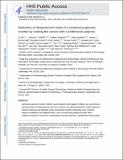| dc.contributor.author | Xie, Xi | |
| dc.contributor.author | Doloff, Joshua C | |
| dc.contributor.author | Yesilyurt, Volkan | |
| dc.contributor.author | Sadraei, Atieh | |
| dc.contributor.author | McGarrigle, James J. | |
| dc.contributor.author | Omami, Mustafa | |
| dc.contributor.author | Veiseh, Omid | |
| dc.contributor.author | Farah, Shady | |
| dc.contributor.author | Isa, Douglas | |
| dc.contributor.author | Ghani, Sofia | |
| dc.contributor.author | Joshi, Ira | |
| dc.contributor.author | Vegas, Arturo | |
| dc.contributor.author | Li, Jie | |
| dc.contributor.author | Wang, Weiheng | |
| dc.contributor.author | Bader, Andrew | |
| dc.contributor.author | Tam, Hok Hei | |
| dc.contributor.author | Tao, Jun | |
| dc.contributor.author | Chen, Hui-jiuan | |
| dc.contributor.author | Yang, Boru | |
| dc.contributor.author | Williamson, Katrina Ann | |
| dc.contributor.author | Oberholzer, Jose | |
| dc.contributor.author | Langer, Robert S | |
| dc.contributor.author | Anderson, Daniel Griffith | |
| dc.date.accessioned | 2019-09-25T20:37:05Z | |
| dc.date.available | 2019-09-25T20:37:05Z | |
| dc.date.issued | 2018-07-30 | |
| dc.identifier.issn | 2157-846X | |
| dc.identifier.uri | https://hdl.handle.net/1721.1/122291 | |
| dc.description.abstract | © 2018, Nature Publishing Group. All rights reserved. Continuous glucose monitors (CGMs), used by patients with diabetes mellitus, can autonomously track fluctuations in blood glucose over time. However, the signal produced by CGMs during the initial recording period following sensor implantation contains substantial noise, requiring frequent recalibration via finger-prick tests. Here, we show that coating the sensor with a zwitterionic polymer, found via a combinatorial chemistry approach, significantly reduces signal noise and improves CGM performance. We evaluated the polymer-coated sensors in mice as well as in healthy and diabetic non-human primates, and show that the sensors accurately record glucose levels without the need for recalibration. We also show that the coated sensors significantly abrogated immune responses, as indicated by histology, fluorescent whole-body imaging of inflammation-associated protease activity and gene expression of inflammation markers. The polymer coating may allow CGMs to become standalone measuring devices. | en_US |
| dc.description.sponsorship | This work was supported by the Leona M. and Harry B. Helmsley Charitable Trust Foundation (2015PG-T1D063), Juvenile Diabetes Research Foundation (JDRF) (Grant 17-2007-1063), and National Institutes of Health (Grants EB000244, EB000351, DE013023 and CA151884), and through a generous gift from the Tayebati Family Foundation. J.C.D was supported by JDRF postdoctoral fellowship (Grant 3-PDF-2015-91-A-N). J.O. is supported by the National Institutes of Health (NIH/NIDDK) R01DK091526 and the Chicago Diabetes Project. X.X. was supported by the 100 Talents Program of Sun Yat-Sen University (76120-18821104) and 1000 Talents Youth Program of China and would like to acknowledge financial support from the National Natural Science Foundation of China (Grant No.51705543, 61771498 and 31530023) and Science and Technology Program of Guangzhou, China (Grant No. 20180310097). And, of extreme importance, the authors thank the Histology and Whole Animal Imaging cores for use of resources (Swanson Biotechnology Center, David H. Koch Institute for Integrative Cancer Research at MIT). | en_US |
| dc.language.iso | en | |
| dc.publisher | Springer Science and Business Media LLC | en_US |
| dc.relation.isversionof | 10.1038/s41551-018-0273-3 | en_US |
| dc.rights | Article is made available in accordance with the publisher's policy and may be subject to US copyright law. Please refer to the publisher's site for terms of use. | en_US |
| dc.source | PMC | en_US |
| dc.title | Reduction of measurement noise in a continuous glucose monitor by coating the sensor with a zwitterionic polymer | en_US |
| dc.type | Article | en_US |
| dc.identifier.citation | Xie, Xi, Doloff, Joshua C, Yesilyurt, Volkan, Sadraei, Atieh, McGarrigle, James J. et al. 2018. "Reduction of measurement noise in a continuous glucose monitor by coating the sensor with a zwitterionic polymer." 2 (12). | |
| dc.contributor.department | Koch Institute for Integrative Cancer Research at MIT | |
| dc.contributor.department | Massachusetts Institute of Technology. Department of Chemical Engineering | |
| dc.contributor.department | Harvard University--MIT Division of Health Sciences and Technology | |
| dc.contributor.department | Massachusetts Institute of Technology. Institute for Medical Engineering & Science | |
| dc.eprint.version | Author's final manuscript | en_US |
| dc.type.uri | http://purl.org/eprint/type/JournalArticle | en_US |
| eprint.status | http://purl.org/eprint/status/PeerReviewed | en_US |
| dc.date.updated | 2019-08-09T14:58:49Z | |
| dspace.date.submission | 2019-08-09T14:58:50Z | |
| mit.journal.volume | 2 | en_US |
| mit.journal.issue | 12 | en_US |
